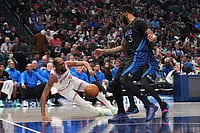The 2024 election is heating up as Ohio Senator J.D. Vance and Minnesota Governor Tim Walz are set to face off in their first—and likely final—vice presidential debate on October 1. With the election just around the corner on November 5, this high-stakes event could play a critical role in winning over undecided voters.
The debate, hosted by CBS News, will be broadcast live at 9 p.m. ET and moderated by CBS Evening News anchor Norah O'Donnell and Face the Nation's Margaret Brennan. Unlike previous debates, the candidates' microphones will remain on throughout the 90-minute event, even when the other is speaking—a change that adds a new level of intensity to the exchange.
Key Debate Rules
1. Hot Microphones:
One of the most notable rules for this debate is that both candidates' microphones will remain on for the entire 90 minutes. This is a departure from the muted microphones used in the presidential debate between Donald Trump and Kamala Harris, where mics were silenced when it wasn’t a candidate’s turn to speak.
By keeping both mics on, CBS News hopes to foster more direct dialogue between Vance and Walz, even if it means there could be more interruptions or overlapping conversation. While this could lead to a livelier debate, it also raises the possibility of more heated exchanges. CBS has clarified that it “reserves the right to turn off candidate microphones” if things get too chaotic, but this will only be used in extreme cases.
2. No Live Audience:
The debate will take place in an empty studio, with no live audience allowed. This follows the same format as the recent presidential debate and is designed to minimize any disruptions or distractions that could come from audience reactions.
In past debates, audience members were instructed to stay quiet, but cheers, boos, or applause would often interrupt or influence the flow of the debate. The absence of an audience means the focus will stay entirely on the candidates’ words and performance without the emotional input of crowd reactions.
3. Standing at Lecterns:
Another notable feature of this debate is that both candidates will be standing at lecterns for the full 90 minutes. This format hasn’t been used in a vice presidential debate since 2008, where candidates have typically been seated for a more conversational atmosphere.
Standing at lecterns creates a more formal and intense setting, and could allow both Vance and Walz to use more body language as they respond to each other and the moderators. The candidates will be provided with only a few essentials—each will have a pen, notepad, and a bottle of water, with no pre-written notes or props allowed. Vance will stand on the right side of the stage, while Walz will be on the left.
4. No Opening Statements, Only Closings:
Like the recent presidential debate, there will be no opening statements for the vice presidential candidates. Instead, the debate will jump straight into the questions after the moderators briefly introduce both candidates. The debate will conclude with each candidate delivering a two-minute closing statement, allowing them to make a final appeal to voters.
The order of closing statements was decided by a coin toss held earlier in the week. Vance won the toss and chose to speak last, giving him the final word in the debate. This is often seen as a strategic advantage since the last speaker can leave a lasting impression on the audience.
5. Debate Format and Rebuttals:
The debate will follow a structured format where each candidate will have two minutes to answer the moderators’ questions. After each initial response, the other candidate will be given one minute to rebut the points made. The debate will allow for additional back-and-forth responses as the moderators see fit, with each candidate potentially getting another minute to extend the discussion if necessary.
This format ensures that both candidates have an equal opportunity to present their positions and respond to critiques, while also allowing the moderators to keep the discussion moving forward. The candidates will not be allowed to ask questions directly to each other, meaning all questions will come from the moderators. To keep the debate flowing smoothly, lights in front of the candidates will indicate how much speaking time remains.
6. Commercial Breaks Without Interaction:
There will be two commercial breaks during the 90-minute debate, offering a brief pause for viewers and candidates alike. However, during these breaks, campaign staff will not be allowed to communicate with the candidates. This rule is designed to prevent any behind-the-scenes strategizing or adjustments during the debate, keeping the focus entirely on the candidates’ unfiltered performance.
The rivalry between Vance and Walz has been intense throughout the election season. Walz, a former National Guard member, made waves when he called Vance and former President Donald Trump “weird” in an interview, a comment that quickly went viral among Democrats. On the other hand, Vance has taken jabs at Walz’s military record, questioning his retirement from the National Guard before his unit deployed to Iraq in 2005.


























